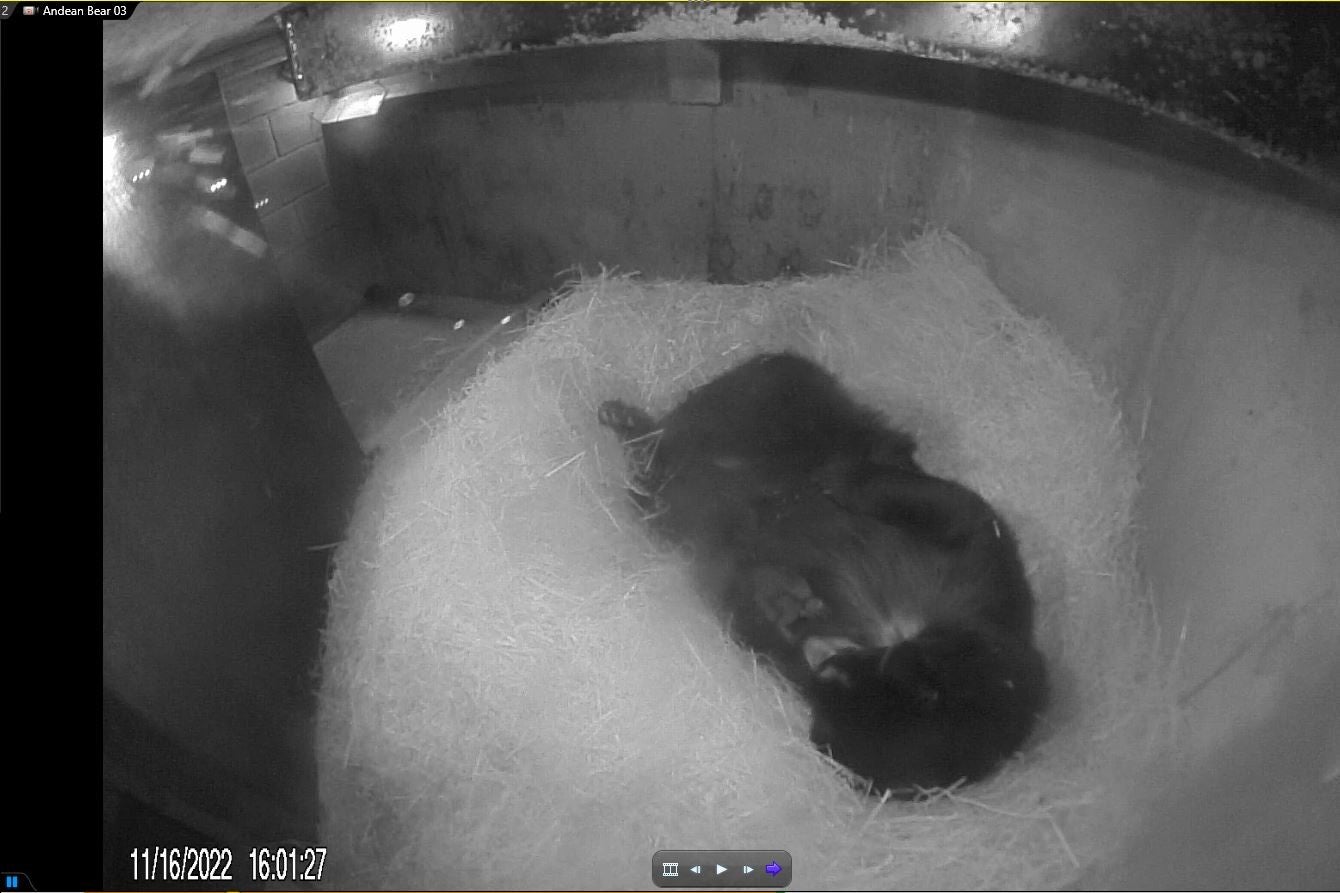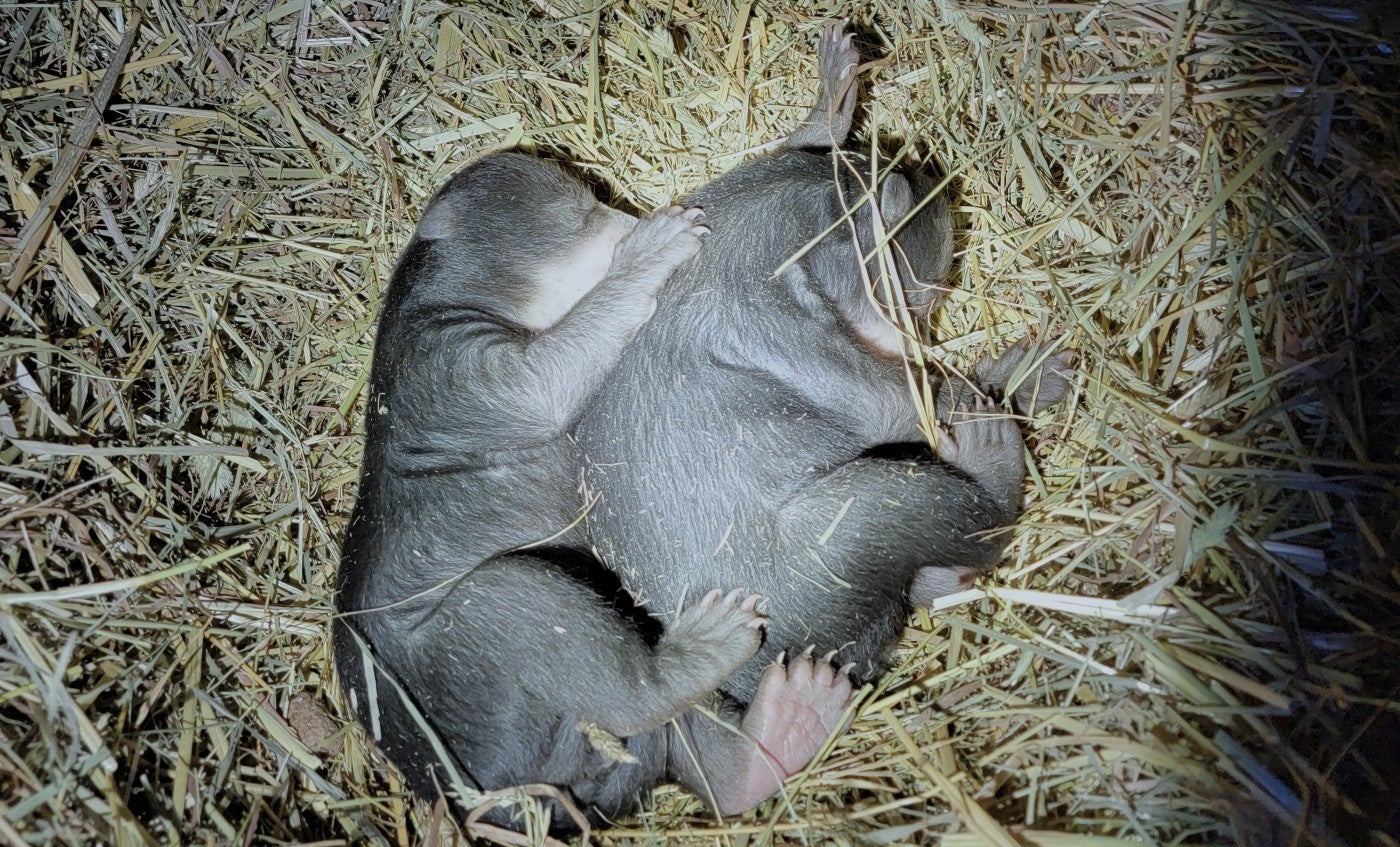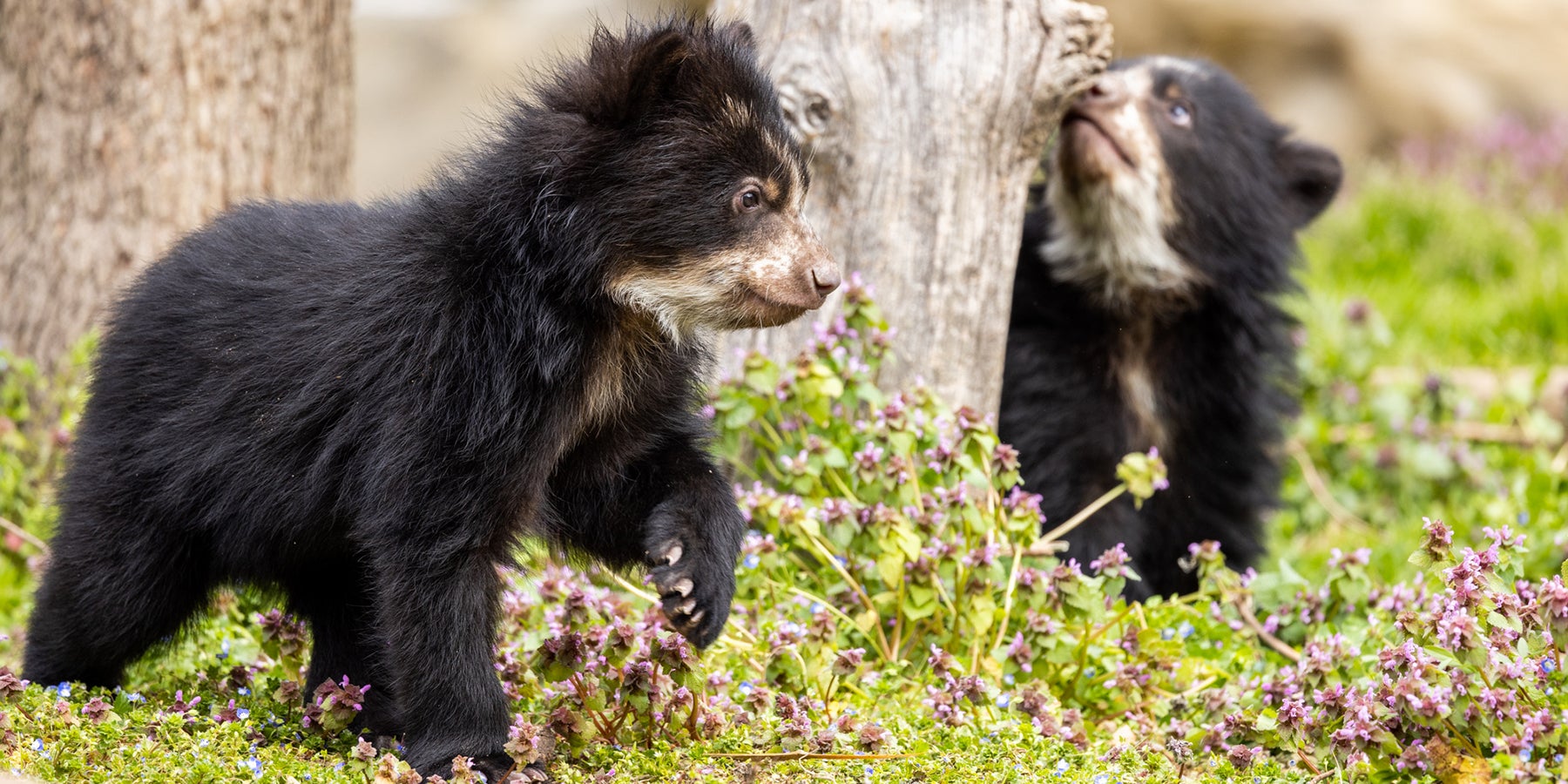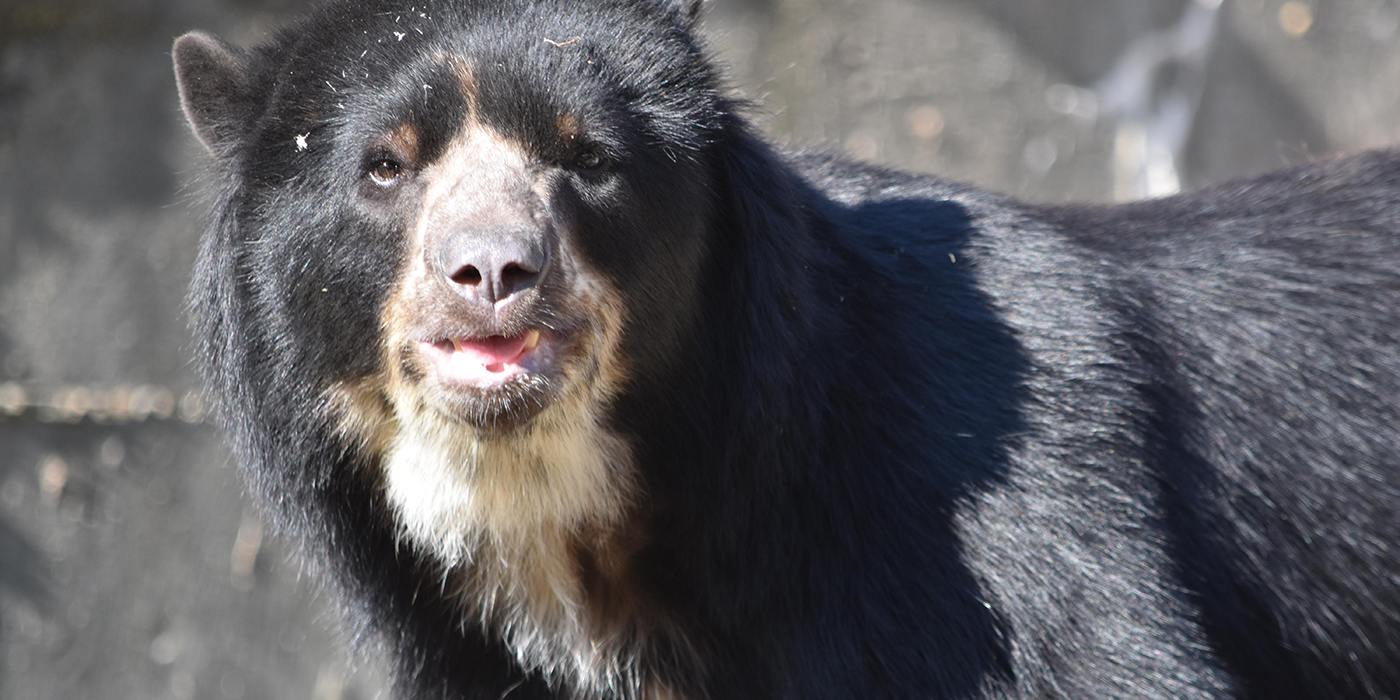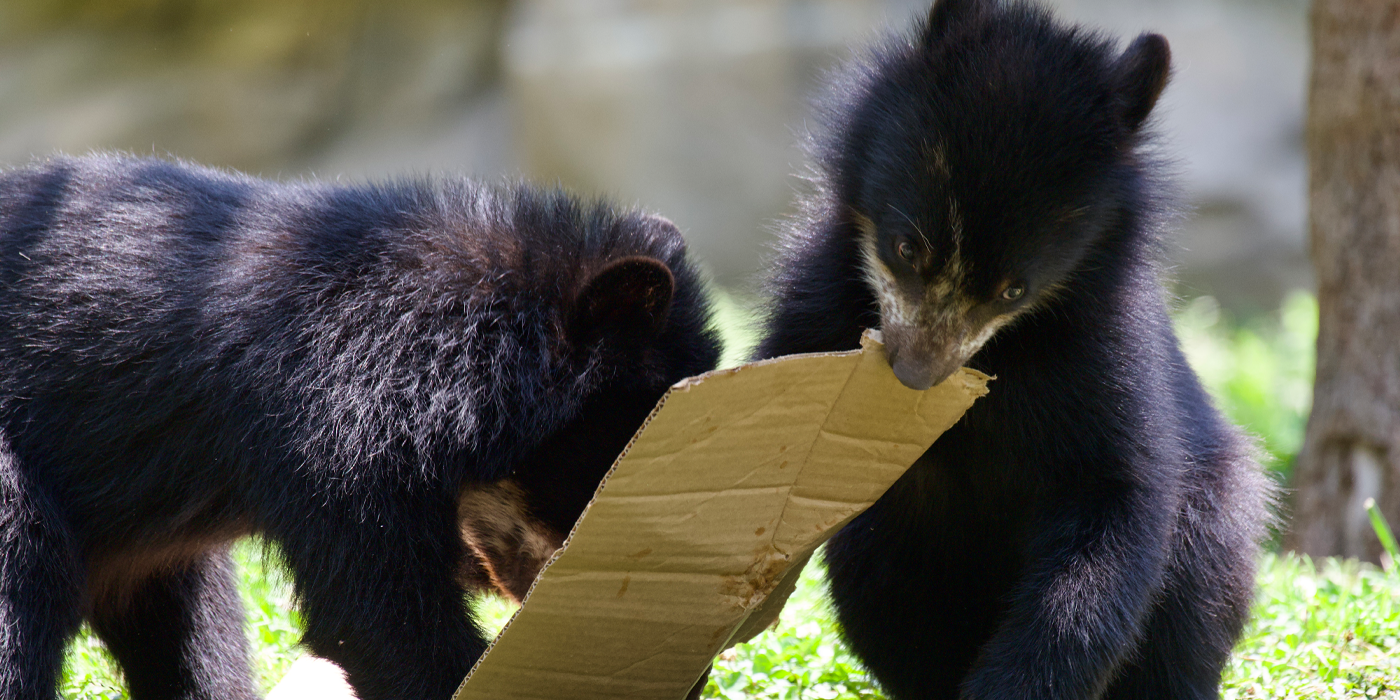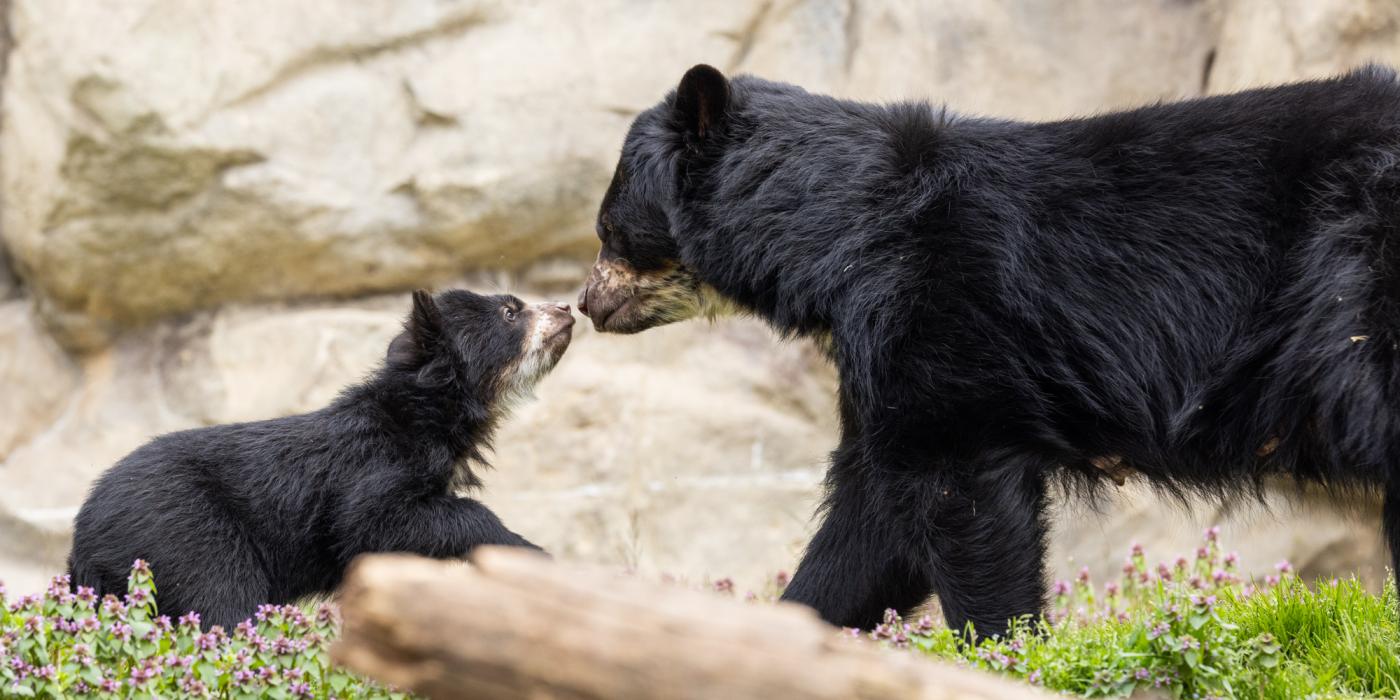Happy First Birthday, Andean Bear Cubs!
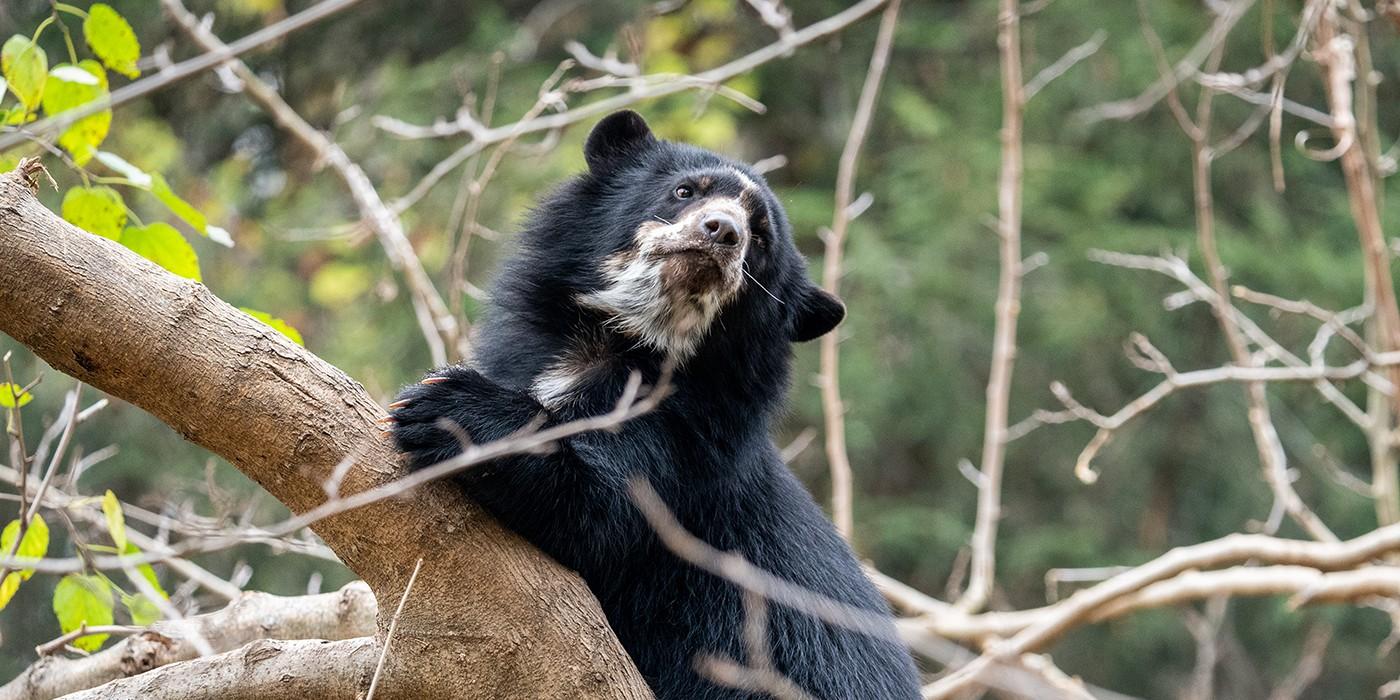
Climbing trees, breaking branches and munching on mulberries — that’s a day in the life of our Andean bear brothers, Ian and Sean! The dynamic duo was born one year ago to now 4-year-old mother Brienne and 10-year-old father Quito. Celebrate the bears’ big day and see how their personalities shine in this Q+A with Sara Colandrea, animal keeper and North American Andean bear studbook keeper and Species Survival Plan coordinator.
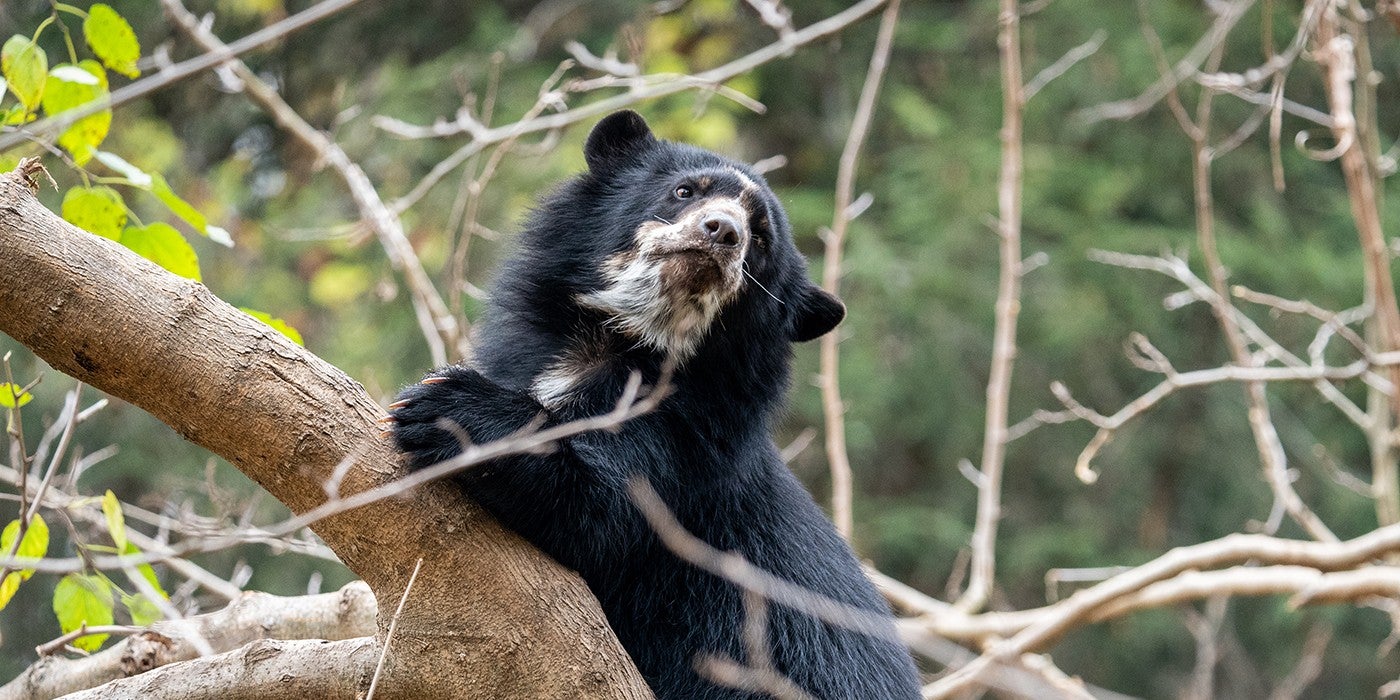
Andean bears' facial markings are unique and help keepers tell the Zoo’s bears apart. Ian has a triangle shape on his forehead just like his great-grandmother, Billie Jean.
What do you enjoy most about working with these cubs?
It may seem a little silly, but I love watching Ian and Sean sleep in the trees. It’s hilarious to see them climb all the way to the tip-top, only to fall fast asleep and not take in the sights! Andean bears are arboreal, so it is no surprise that this is the boys’ favorite hangout spot. They spend lots of time breaking branches for nests and eating leaves and mulberries.
Recently, we celebrated Halloween and gave them pumpkins for the first time. In the past, our Andean bears only paid attention to pumpkins if there were goodies hidden inside. Or, they would smash them. However, Sean had an absolute blast playing with one of the pumpkins! He even picked up a big piece of it in his mouth and carried it up a tree. It was adorable.
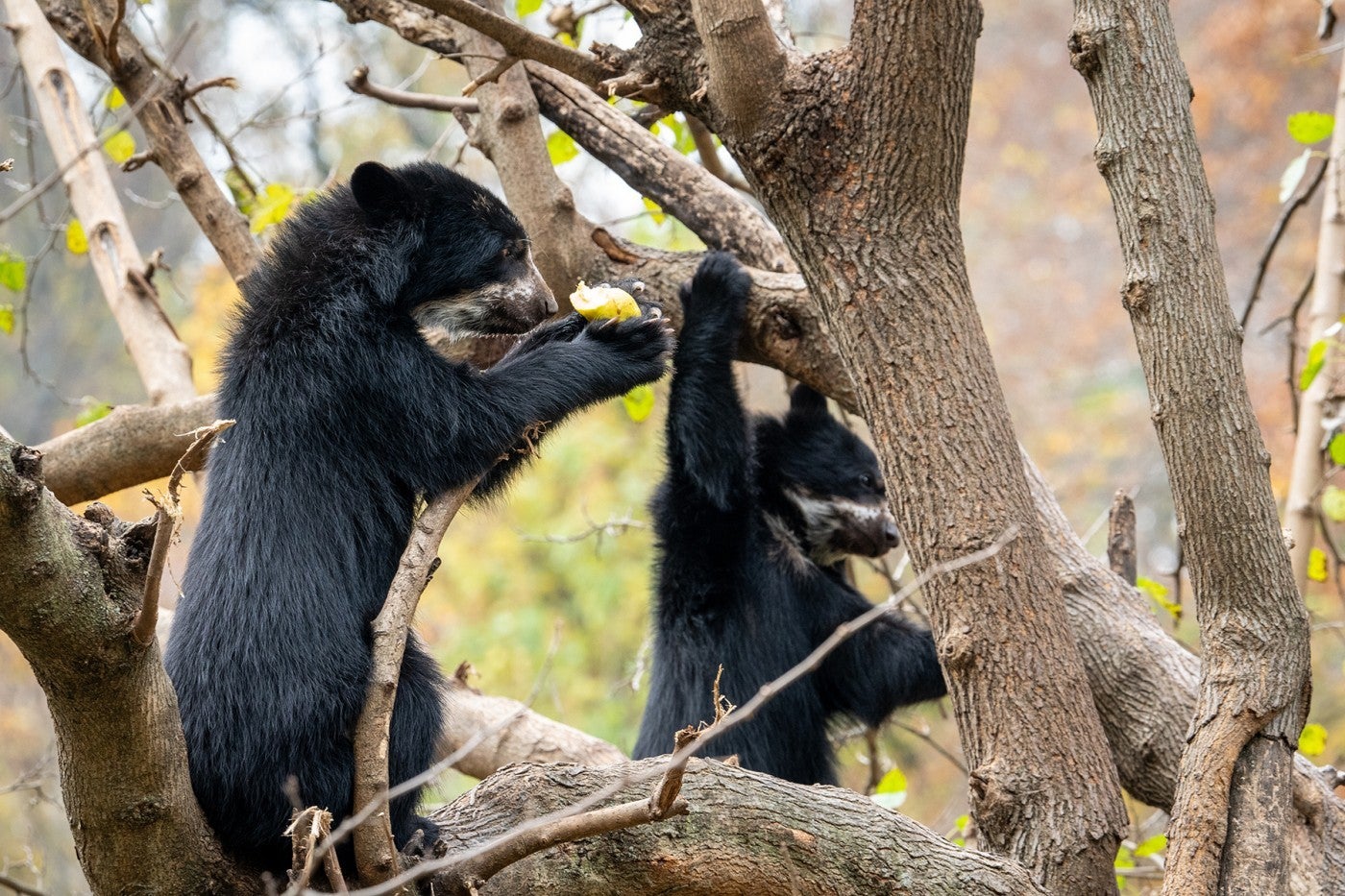
Ian (left) and Sean (right) snack in the tree canopy.
What do they eat?
Andean bears are omnivores. Here at the Zoo, our quartet receives a heaping helping of fresh fruits and vegetables every day. They also receive capelin, herring, cow bones, hard-boiled eggs and mixed nuts. Once a month, each bear receives a whole salmon, too. Ian and Sean seem to really go for fruit, nuts and fish.
To celebrate their birthday, the keepers in our Department of Nutrition Science made a special cake for Ian and Sean. It is made of frozen-diluted fruit juice, fruits, veggies and nuts — all of their favorite treats!
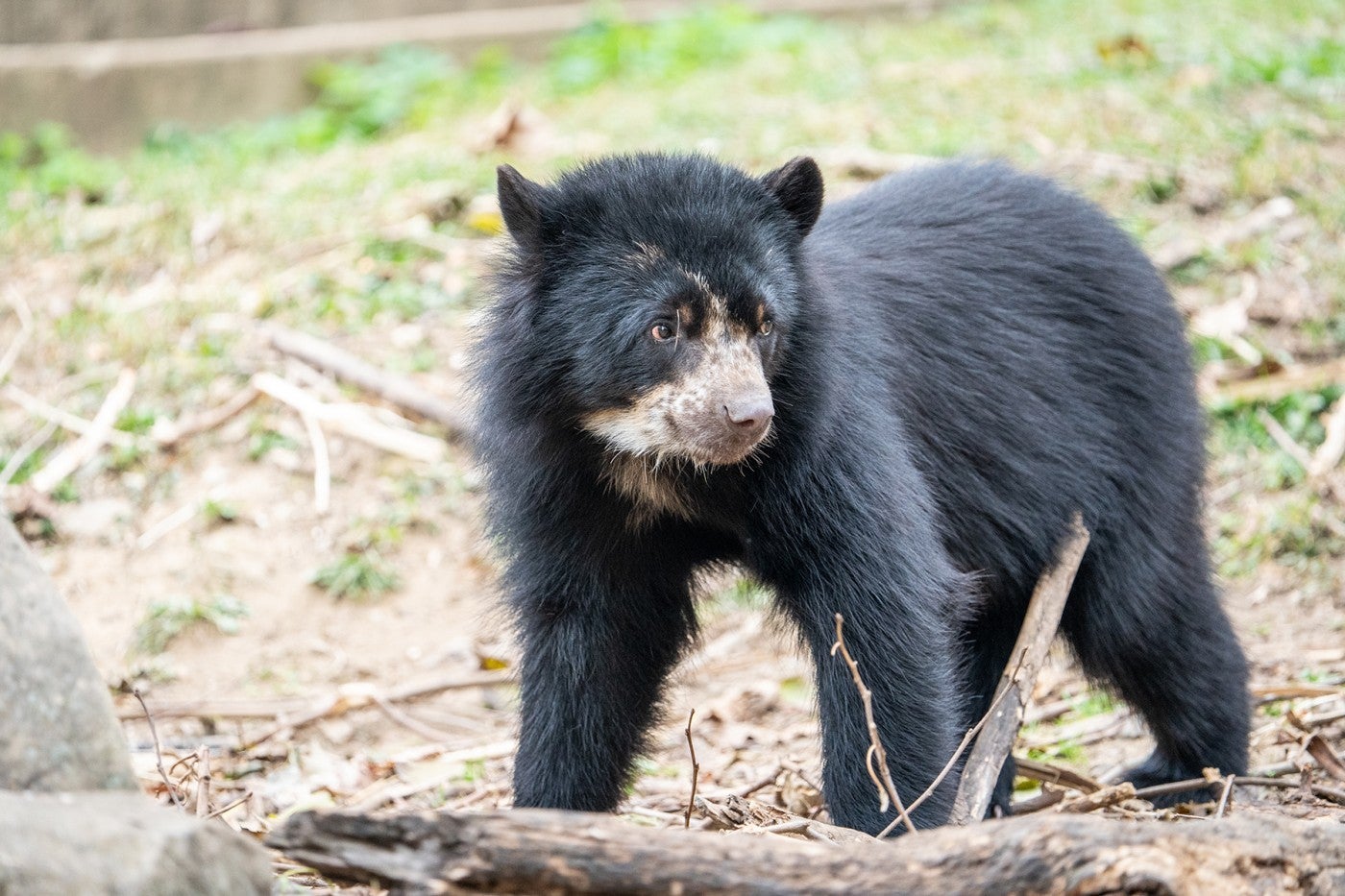
Sean has a hook over his right eye, just like his dad Quito!
How big are Ian and Sean?
At their last weekly weigh-in, Ian was 32.5 kilograms (just over 71 pounds) and Sean was slightly smaller at 28.5 kilograms (almost 63 pounds). They’ve grown a lot since birth—newborn Andean bears weigh between 10 and 18 ounces. But, they’ve got a ways to grow before they catch up to dad, Quito, who weighs 330 pounds!
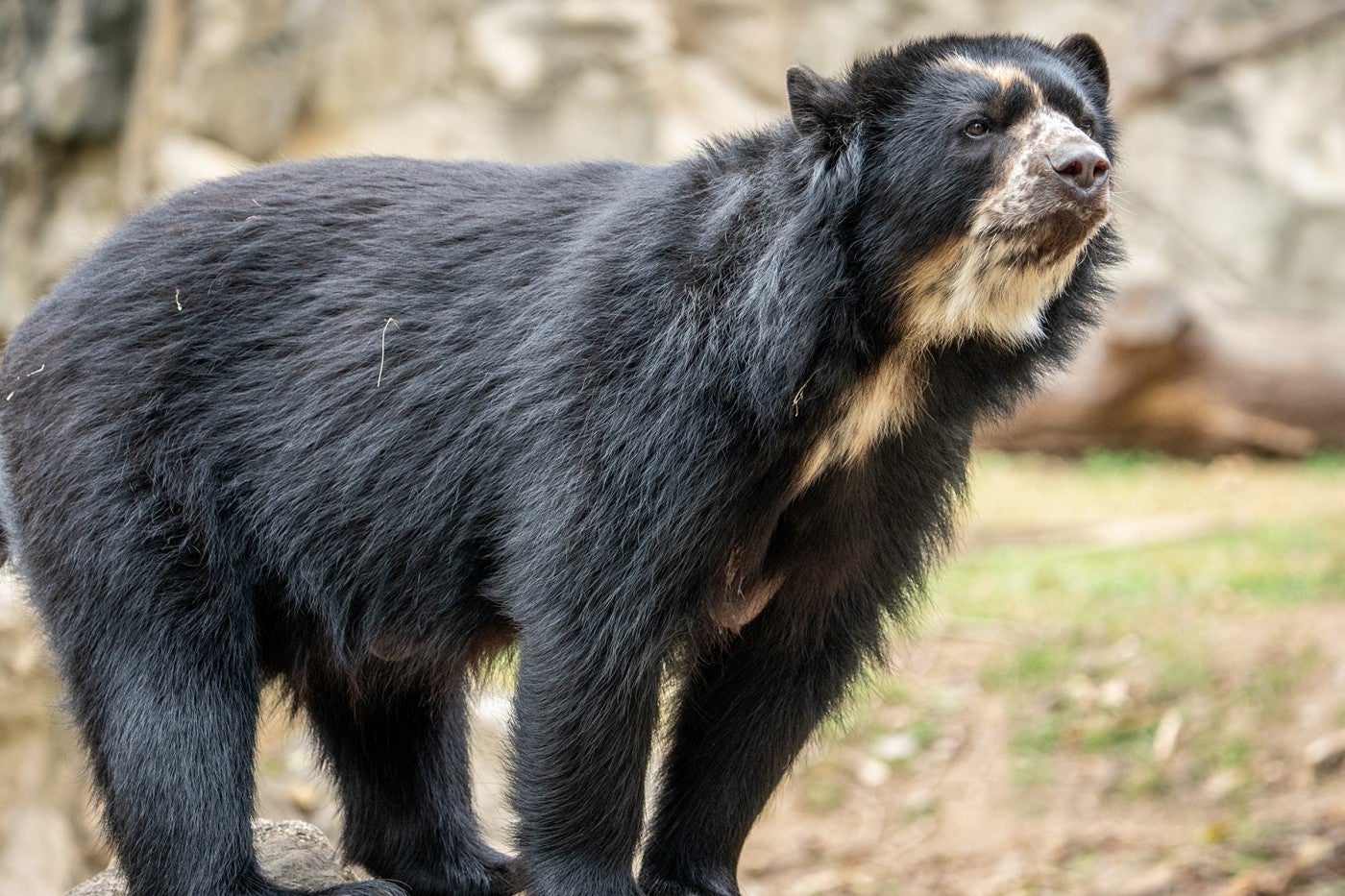
Brienne has a lightning bolt on her forehead. She is curious and daring. Often, keepers have observed her running along the edges of the rockwork in her habitat or taking a nap way up high in the tree canopy.
What are their personalities like?
Ian and Sean have similar personalities. Some days, they are very independent. Others, they are stuck to mom like glue. Interestingly, they seem to take turns being independent!
They are in the process of learning their names and when to come inside. Both seem to enjoy interacting with keepers and will accept treats from us. It is tricky to get one-on-one time with them because Brienne is always with them and insists that she gets all the attention. She has been known to push them out of the way for treats!
What is Brienne’s parenting style?
Most days, Brienne keeps an eye on her cubs from afar. She doesn’t hover over them anymore and gives them space to be independent. When she wants to go inside, she doesn’t seem to mind if they stay in the outdoor habitat on their own.
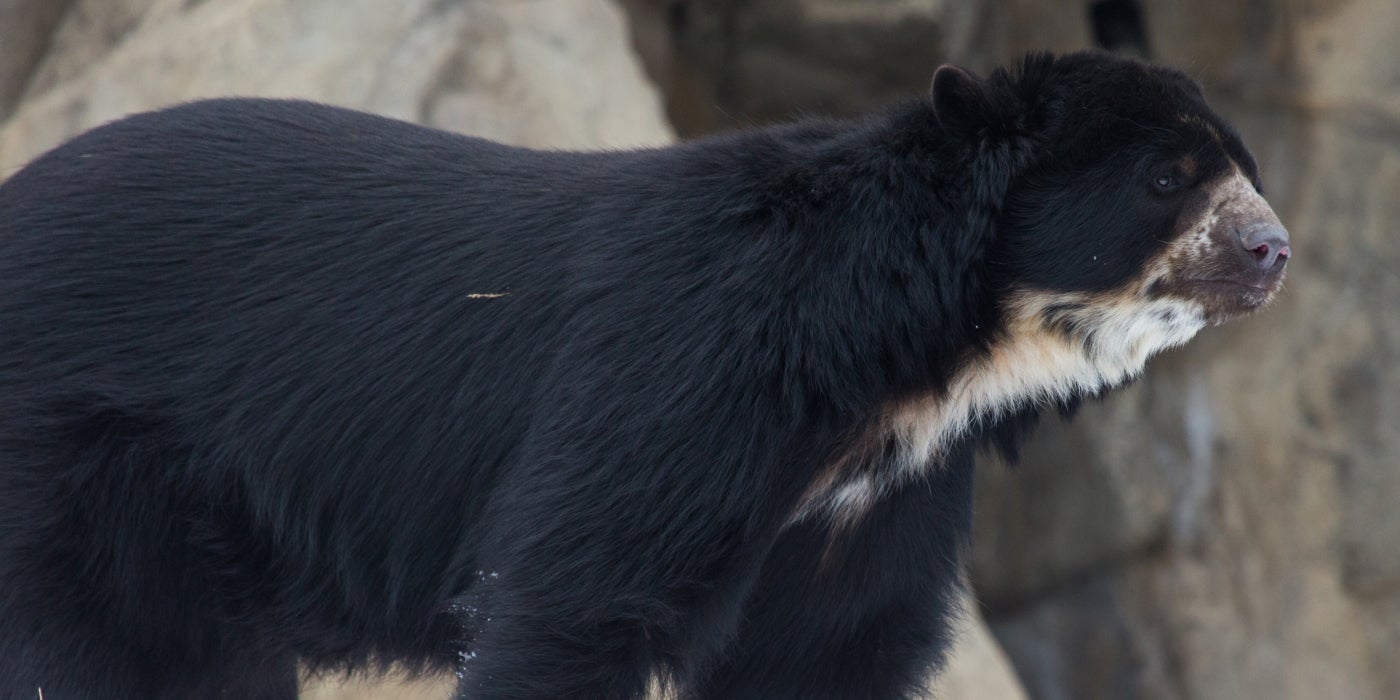
Quito has an endearing personality. He is eager to interact with his keepers and often entertains himself by playing with his enrichment toys.
Does Quito show any interest in Ian and Sean?
Male Andean bears do not take any part in rearing cubs. So, while Quito is aware of the cubs’ presence, he likely does not know they are his. He will look over into the habitat occupied by Brienne and the boys a good amount. However, there’s almost no way to know if he is curious about the cubs or if he is just interested in Brienne!
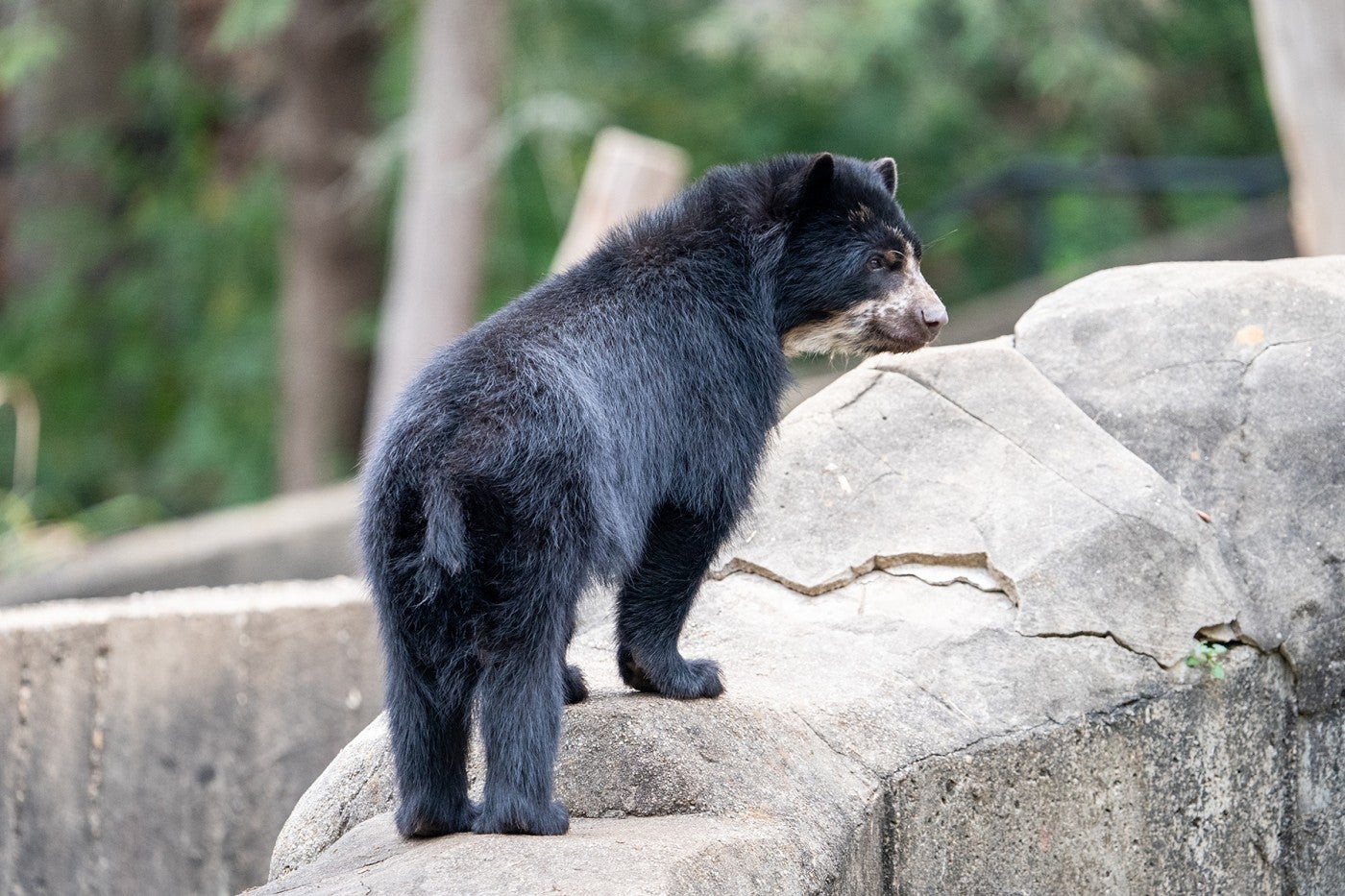
Sean climbs the rockwork in his outdoor habitat.
What’s next for Ian and Sean?
My hope is that Ian and Sean will remain with Brienne until they are about two years old. Her behavior will be the main force in letting us know when she’s ready for the boys to be on their own.
Andean bears can do fine if they are separated from their mom at an earlier age. However, if the mother keeps the cubs for longer, they tend to exhibit less stereotypic behaviors and know how to “behave” better around mates.
Once Brienne decides it’s time to separate, Ian and Sean will continue to live together for the most part until they go to other facilities to breed.
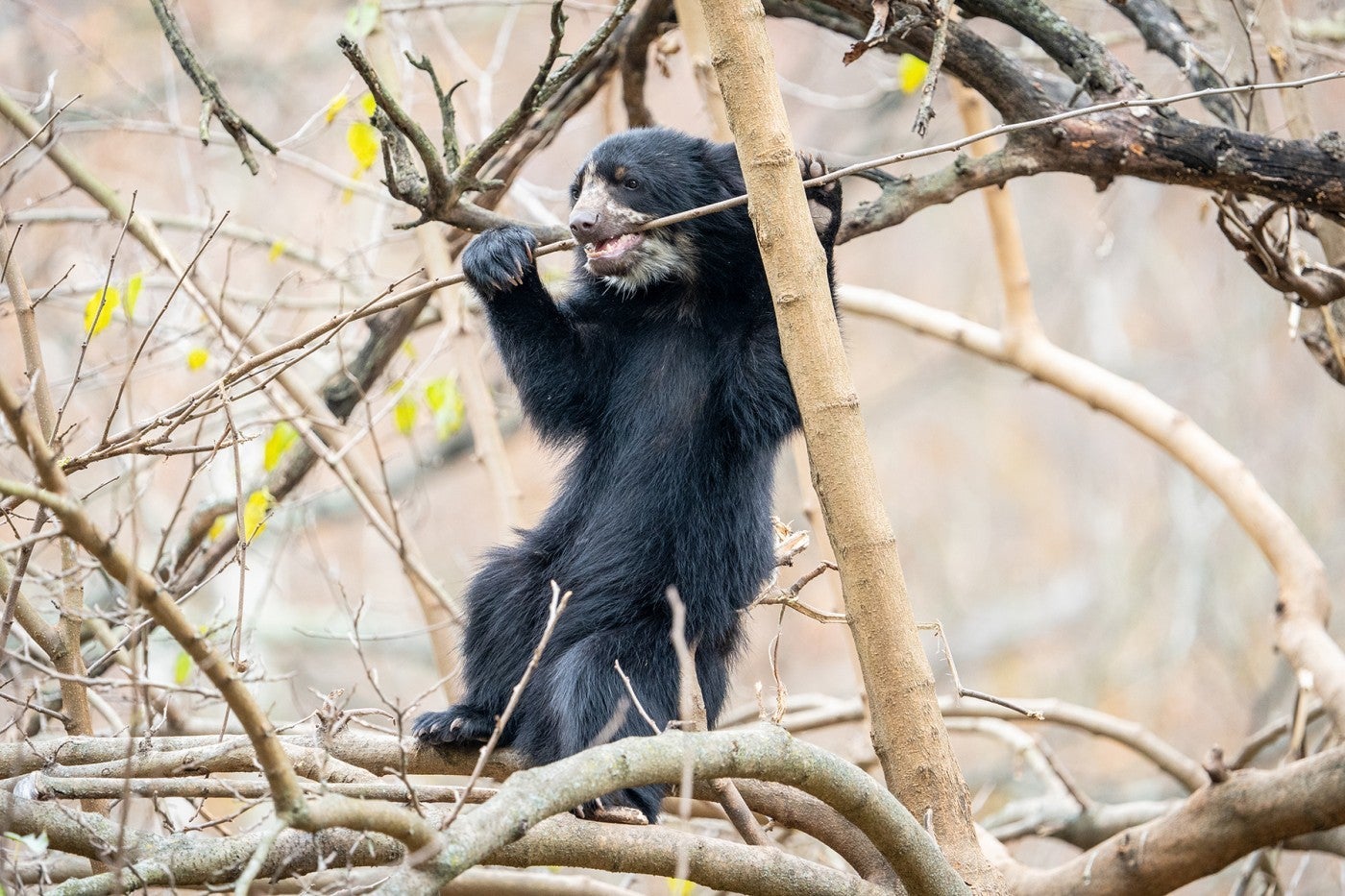
Ian nibbles on a branch.
Got any tips for spotting them?
My tip for visitors is: look up — you’ll probably see them in the trees!
If Ian and Sean are on the ground, they’re usually eating. You may see them nurse from their mom, Brienne. (They make a trilling or “digga-digga-digga” sound when they nurse.) But they also forage for food, which we scatter around the habitat for them to find.
I encourage you to attend our daily Andean bear demonstrations at 10:30 a.m. and 1:30 p.m. to learn more about our bears as individuals and their species as a whole.

Sean surveys his surroundings from the tip-top of the tree canopy!
I want to help Andean bears! What can I do?
One very simple action you can do at home to help Andean bears is to purchase food or beverages that are sustainably sourced. Andean bears are the only bear native to South America, and they live in the Andes mountain range in Peru, Venezuela, and Bolivia, among other countries. Threats — including deforestation — leave them vulnerable to extinction. Their habitat today is a fraction of what it was historically.
When you shop, make eco-friendly choices. Consider buying shade-grown coffee and cocoa, which are grown sustainably and help preserve Andean bears’ native habitat. You can also support conservation and research efforts in the bears’ native habitat directly through the Association of Zoos and Aquariums’ Saving Animals From Extinction (SAFE) program.
Last but not least, come visit Ian, Sean, Brienne and Quito at Smithsonian’s National Zoo and Conservation Biology Institute! Nothing beats seeing these magnificent animals in person and watching them play, climb and tumble around their exhibit. I hope the experience inspires visitors to care about these charismatic bears and take action to preserve their native habitat.
This story appears in the December 2023 issue of National Zoo News. Follow the latest news about our Andean bear family here. And, get to know the Zoo’s new sloth bear, Vicki, in this update from the Asia Trail team!
Related Species:

